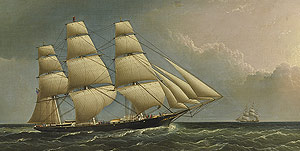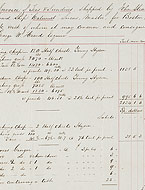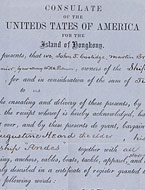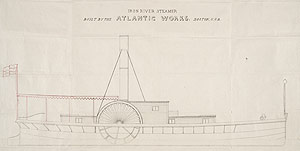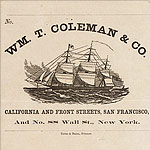
The access to the tea and silk district will enable us to be sure that we can produce at fair prices; and the navigation of the Yangtze and other rivers will make steam very important.
— John Heard to Augustine Heard, July 19, 186029Speeding Up the Trade: Clippers and Steamships
While the profits to be realized in the China trade were magnificent, the four- to five-month voyage from the Eastern ports in the United States to China posed innumerable threats—disease, typhoons, and possible invasion from pirates, the Chinese, or other foreign ships. The introduction of the American clipper ships (the word “clipper” signified speed) with their narrow hulls and large sails enabled sea travel at speeds of up to 30 kilometers an hour, far faster than the average merchant ships. Now Western traders could deliver the freshest tea possible, make more trips annually, and outpace the Chinese junks when smuggling opium.
In the mid-1840s Augustine Heard & Co. commissioned the Gardner shipyard in Baltimore to build the vessels the Frolic and the Dart.30 The firm wanted a vessel fast and light enough to outpace competitors but big enough to carry a significant amount of freight.31 Baltimore-built vessels, often outfitted with cannons, were especially known for their speed.32 With its massive sails, the Frolic could make headway even in calm days when other ships remained still.
The introduction of steamships brought further advantages to Western traders. With their shallow draft, steamships could sail closer to land and venture into the rivers. After the Second Opium War between Great Britain and China (1856–1860), additional Chinese coastal ports as well as inland rivers, especially the Yangtze River, opened up for trade. “In 1859 or 1860 I carried out a plan I had often thought of. This was to order a river steamer from America,” John Heard wrote. “I was convinced that from the opening of China which could not fail to result from the [Second Opium War], steamers must be much wanted. . . . So I sent Captain Johnson to America to build and bring out a steamer of 700 tons.”33 The steamship the Fire Dart alone turned a profit of $175,000 its first year.34

